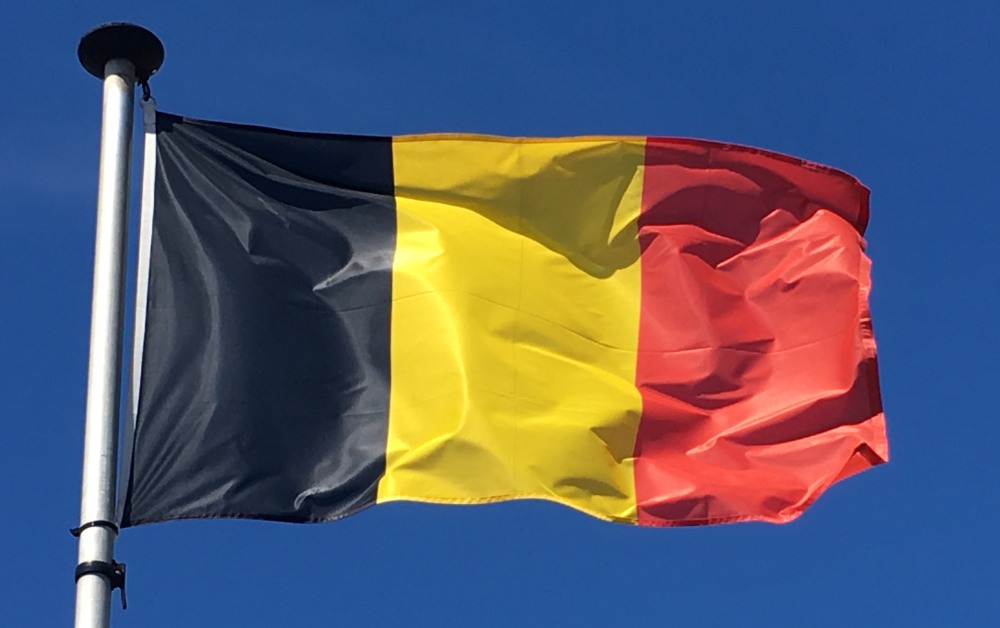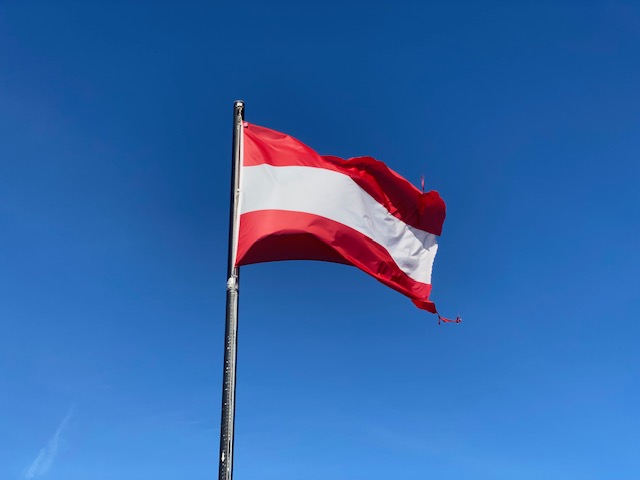Last week, Transport Ministers from European Union member states convened for an informal meeting in Brussels. At the moment, Belgium holds the Presidency of the Council of the European Union until 30 June 2024. Following the meeting, there was a ‘Brussels Declaration on the mobility of tomorrow‘.
The transport sector alone is responsible for a quarter of the EU’s greenhouse gas emissions. Europe’s objective, confirmed in the Climate Law and the Paris Agreements, is to become the first climate-neutral continent by 2050. That’s why it’s vital to redirect our mobility towards the most sustainable modes of transport, the press release says.

This objective was at the heart of this informal meeting of European Transport Ministers organised by Federal Minister of Mobility Georges Gilkinet (Ecolo) who brought together his 26 European colleagues as part of the Belgian presidency of the Council of the European Union.
At the end of the meeting devoted to active mobility, rail connections and the resilience of our transport infrastructures, the Belgian presidency presented a Brussels Declaration, setting out clear and ambitious guidelines for the next European legislature.
Belgian Federal Minister of Mobility Georges Gilkinet: “A 90% reduction in transport emissions is needed by 2050. However, transport is the only sector of the economy whose emissions have continued to rise over the last 30 years, despite all the efforts made in recent decades to improve vehicle and fuel performance, right up to today’s electrification. While technology can and must play a role in decarbonising mobility, it will not be enough on its own to enable us to achieve our climate objectives. The EU must encourage and support the greenest modes of travel, as they are the essential pillars for reducing transport’s carbon footprint. For short journeys, we need to develop active mobility – cycling in particular – and for longer journeys or goods transport, we need to make the railway the backbone of mobility in Europe.”
This Declaration calls on the European Union to take the following steps during the next legislature:
Make rail transport the backbone of European mobility
- Make the modal shift towards rail transport a central objective of European mobility policy. Set binding targets for the modal share of rail along trans-European transport corridors, and report on the achievement of these targets.
- Propose an EU-wide master plan to increase the supply of rail services for freight and passengers. The European Commission must ensure that future EU policies all contribute to increasing supply and to the modal shift towards rail transport.
- To ensure, through a new legislative proposal, that a passenger can easily compare, book and pay for their door-to-door train journey in a trans-European perspective, while being assured of the continuity of their journey, regardless of whether one or several rail companies are involved.
- Develop a dedicated strategy for night train passenger services, including reduced fares, to offer a viable alternative to short- and medium-haul flights in Europe.
- Make the development of rail freight a priority for the EU’s internal market, with a trajectory of increasing transport volumes by 2030 and 2050, to double the volume of goods transported by rail.
- Prepare the necessary regulatory changes, and make every effort to adopt them, in order to improve the competitiveness of rail transport and ensure a level playing field with other modes of transport, particularly with regard to energy and fuel taxation and rules on State aid.
- Apply the ‘polluter-pays’ principle to mobility to ensure fair competition: the price of each mode of transport must reflect the external costs incurred, such as pollution, CO2 emissions or congestion.
- Analyse the needs of intermodal terminals throughout the European Union and help member states ensure these are adequately met.
- Increase the amount of European funding on offer for rail transport, using all available financing instruments.
- Protect the EU’s rail industry ecosystem from unfair competition from third-country manufacturers, whether tax-related, social or environmental.
- Every citizen is a pedestrian. Cycling and pedestrian mobility must be treated as modes of transport in their own right by the EU.
- The signing of the European Declaration on Cycling by the Commission, the Council and the European Parliament is a decisive step in this direction, making cycling a policy in its own right at European level.
- We want to make sure that this declaration is translated into a real political strategy at EU level, supporting the policies developed at national level by the member states.
- The EU and its member states need to significantly increase their cycling infrastructure to enable citizens to get around safely and efficiently to their places of work and study or for leisure purposes.
- Funding for cycling infrastructure should be covered by existing EU funding programmes.
- The EU needs to develop and protect its industrial sector for the production, maintenance and repair of bicycles from unfair competition from third-country manufacturers. For instance, a ‘Made in Europe’ label should swiftly be developed.
- In order to improve sustainability, quality of life and road safety in urban areas, the EU will contribute to developing cycle logistics that can ensure the last mile and, as a result, help to create jobs that cannot be relocated.
- To support cycling policy in Europe, a specific unit within the Commission should be dedicated to this area.
- Member states should encourage the sharing of knowledge, best practices and data, and forward their national active mobility strategies and plans to the Commission. Data in this area must be collected annually in the same way across the EU.
- Citizens need to play an active role in the shift towards active mobility. “To raise awareness and get them involved, let’s dedicate the next legislature to a European Year of Cycling!”
With this Declaration, the Belgian presidency of the Council of the EU highlights the need for decisive action during the next EU legislature and invites the Commission to present concrete measures, including legislative proposals, to implement the recommendations made in this Declaration.
Back on Track Belgium
In the ‘Brussels Declaration on the mobility of tomorrow’ with the slogan ‘Make rail transport the backbone of European mobility’, the night train – perhaps for the first time – was given a deserved place, Back On Track Belgium reacted to the Declaration.
Back On Track Belgium is an advocacy group promoting night trains across Europe and passing through Belgium.
“Our country chairs the European Council this semester. The European Council is one of the three major institutions that determine European Union (EU) policy, along with the European Commission and the European Parliament. The European Council is not directly elected but counts as members the various heads of government and ministers of the various member states. For our country, as far as the railways are concerned, it is Minister Gilkinet (Ecolo/Green) and he sets the EU agenda of everything railways this semester. Informally, it is known that the Council is the most powerful of the institutions, where the real decisions are taken. Moreover, night trains are an international, and therefore European, issue par excellence. So this is quite an opportunity for us!”
“Together with Austria, Belgium is one of the countries pushing for (international) night trains and we hope that we will be able to change the institutional framework of the railways at European level, because that is exactly where everything goes wrong.
Defining night trains as a separate category
“A minimum step would already be for the EU to mandate that international night trains be considered a fourth segment between which infrastructure managers (such as Infrabel) must distinguish (the other three being goods trains, passenger trains and PSO passenger trains). Recognising night trains as a separate segment across Europe will make it easier to make exceptions, find support, try something out without setting a precedent for all other passenger trains.”
Public service
“Furthermore, but we realise this is not easy everywhere, we are convinced that besides the market (= operators, based on profit), the public can also help determine the international (night) train offer, as a public service. In practice, it is almost impossible for the government to recognise an international night train as a public service. And the difficult cost structure makes it virtually impossible to make a profit outside a few super busy connections within the “blue banana” (Europe’s richest region, running from Southern England through Belgium, the Rhineland and the Alps to Northern Italy).”
Drawing up a net
“Specifically, an EU body could outline a net at the European level, just as the federal government does at the Belgian level. The TEE 2.0 plan that was communicated a few years ago, although that was just a communication stunt, was also already heading in this direction: a network outlined by the cabinet of the then CSU minister in Germany that would serve as the backbone for a European railway network.”


A few more months
“Minister Gilkinet and his Austrian colleague Minister for Climate Action, Environment, Energy, Mobility, Innovation and Technology Leonore Gewessler (The Greens – The Green Alternative) seem to be aware of the problem of who determines the international train offer, and that it cannot only be the market if we want a network from Rovaniemi (Northern Finland) to Faro (Portugal) and from Damascus (Syria) to Den Helder (the Netherlands).”


“The Belgian presidency is still around two months away. Hopefully they can throw enough weight around to get something.”
More on night trains and transcontinental train travel
- European Sleeper finally connects Belgium and the Netherlands to Berlin, Dresden and Prague.
- Slow(er) Eurocity Brussels – Mons – Paris for Olympic and Paralympic Games in July and August 2024.
- Tri-Country Train between Maastricht, Liège and Aachen will start on Sunday 9 June 2024.
- Brussels to Luxembourg by train under 2 hours by 2030?.
- GoVolta wants tourist trains from the Netherlands to Berlin, Paris and Basel and from Antwerp to Germany.
- Heuro wants to operate high speeds trains between Amsterdam, Antwerp, Brussels, Paris and London from 2028.
- Eurostar and five more train operators joined the European Agreement on Journey Continuation.
- ÖBB’s new Nightjet sleeper cars accommodate solo travellers with Mini Cabins.
- Trenitalia orders new Hitachi Frecciarossa trains suited for France, Belgium and the Netherlands.
- ÖBB’s Nightjet to connect Berlin to Brussels from December 2023.
- EUROCITY EC-8 | Basel to Cologne in SBB’s Panoramic Car.
- Trenitalia / FS confirms interest in connecting Spain to Brussels, Amsterdam and Berlin.
- Deutsche Bahn and Trenitalia want piece of Amsterdam – Brussels – Paris HST service via subsidiaries Arriva an Qbuzz.
- SNCF and NMBS / SNCB to link Paris to Brussels with ‘slow’ classic train in about 3 hours from December 2024.
- Sampling NS’ new train and future Benelux rolling stock ICNG.
- REVIEW | Trenitalia Frecciarossa 1000 Paris – Milan in Business Executive.
- RAIL TOUR OF EUROPE | How easy is touring Europe by train?.
- Eight train connections between the Netherlands and Belgium by 2030?.
- REVIEW | ÖBB Nightjet Amsterdam – Zurich night train.
- European Commission wants booking train tickets to be as easy as booking flights.
- Nightjet Vienna/Innsbruck to Brussels, or how we got thrown off the train in Aachen.
- Why the expensive ÖBB Nightjet is really not that expensive.
- Reliving the era of the great railway journeys, travelling overnight on Nightjet.
- How we plan a big rail trip.
- Ticket Distribution: the failure of railways to sell themselves.
- To use night trains in Portugal and Spain or not?.
- Night trains in Europe.
- Low-cost, long-haul trains to conquer Europe?.
- Fly now before it’s taxed and consider using the train instead.
- MIDNIGHT TRAINS | Unified Rail Europe? Coping with rail network challenges.
- MIDNIGHT TRAINS | Choosing rolling stock is more than following national technical rules.
- Midnight Trains abandon United Kingdom, Germany, Denmark and Portugal to aim at Nice, Milan, Rome, Venice, Barcelona and Madrid.

💙
LikeLiked by 1 person
🇪🇺
LikeLike